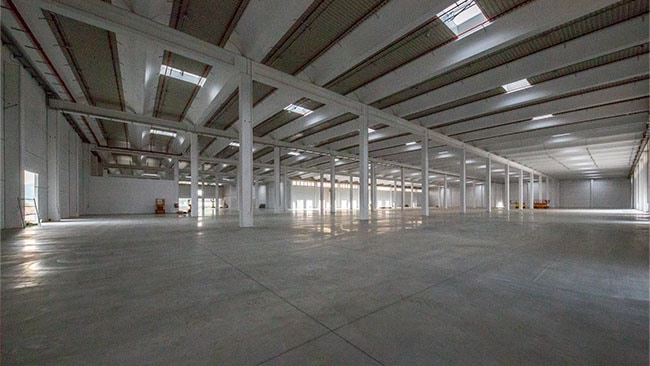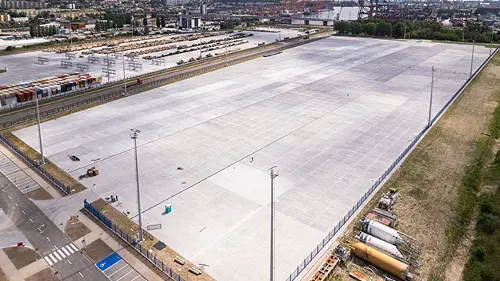
The expert's opinion
/
4/28/2023
The importance of new standards for the application of FRC
The fiber-reinforced concrete (FRC) sector has seen considerable development in recent years.
The fiber-reinforced concrete (FRC) sector has seen considerable development in recent years.
FRC and guidelines
In the last few years there has been a lot of excitement and activity in the scientific and technical community working on fiber-reinforced concrete (FRC).
The definition of FRC can be considered one of the steps along a lengthy journey, crowned by the release of national and international guidelines and technical documents, which include CNR DT 204 and CNR DT 211 by the Italian Research Council, Model Code 2010 by fib (International Federation for Structural Concrete), and the 4th edition of the Concrete Society Technical Report no. 34.
Revisions made to the standards adopted by the sector incentivise the use of FRC when making structural elements, introducing the use of performance characteristics for structural purposes, such as residual flexural strength, which had previously not been considered.
The toughness class of fiber-reinforced concrete is defined by an alphanumeric code according to characteristic values for residual tensile strength, calculated using experimental means. For example, 2B indicates that the FRC has a characteristic tensile strength value fR1k of between 2 and 2.5 MPa and an fR3k/fR1k ratio in the range 0.7 ≤ fR3k/fR1k < 0.9. This enables designers that intend using the ductility of fiber-reinforced concrete to specify its characteristics directly, such as residual tensile strength fr1 and fr3, or to specify the toughness class of the FRC. Manufacturers of concrete must use structural fibers certified according to EN 14889-1/2 and attested under System 1.
On-site control procedures and guidelines issued by national bodies responsible for public works provide designers and engineers with precise indications for the design, manufacture and control of structural elements for which fiber-reinforced concrete is used. Designers, therefore, have access to several tools to help them design and verify various types of fiber-reinforced concrete elements correctly, including floors.
Evaluating the strength of a floor in fiber-reinforced concrete is different than with a conventional floor in reinforced concrete.

A view of the concrete floors completed in the Docks logistic centre in Arquata Scrivia (Italy).
FRC for industrial floors
One of the fields for which fiber reinforced concrete may be immediately applied is, undoubtedly, the industrial floors sector. A floor needs to go through an actual design process to calculate the dimensions of the slab by verifying its capacity at the ultimate limit state, but also by verifying its serviceability limit state with respect to deformations and cracking phenomena in the slab.
Evaluating the strength of a floor in FRC is different than with a conventional floor in reinforced concrete (RC) because of the different reaction of the material. The concept behind fiber-reinforced concrete is that the concrete should have a certain amount of residual tensile stress once cracking occurs within the matrix, something that in conventional reinforced concrete is fully accounted for by the steel reinforcement, generally consisting of electro-welded mesh. Having said that, with respect to a floor made from reinforced concrete, the same verifications need to be carried out regarding its ultimate limit state and serviceability limit state.
The calculation methods used at the ultimate limit state are the yield line method to calculate its flexural capacity and punching tests on the loaded face and critical perimeter. For the serviceability limit state, on the other hand, they are the evaluation of cracking due mainly to deformations caused by shrinkage in the slab.
There are many possible design solutions, ranging from the use of electro-welded reinforcing mesh in combination with fiber-reinforced concrete, to the complete removal of electro-welded mesh and the use of fiber-reinforced concrete only. Which design solution to adopt should be decided by the designer and depends on the calculations carried out and the conditions around the slab.
Whenever fiber-reinforced concrete is used, the installation process of an industrial floor can be optimised, in that the amount of electro-welded is reduced (or even eliminated in certain cases) and, as a result, site operation times can also be optimised due to installation being that much quicker.
Fiber-reinforced concrete also plays an essential role in floors when dealing with deformations in the slab which, if not evaluated correctly (at the serviceability limit state), in certain cases could generate higher stresses than the tensile strength of the matrix and, as a result, trigger the formation of undesired cracking.
The use of FRC allows the amount of electro-welded mesh to be reduced or even eliminated in certain cases.
Reduction of contraction joints
Cracking in floors is one of the main causes of disputes and, in most cases, appears within a few days of installation. Cracking can be caused by a number of phenomena, such as the section being inadequate for the expected loads, a high level of deformations due to shrinkage, installation errors or large variations in the section. In general, the main cause is incorrect calculation of the dimensions and the distribution of contraction joints.
The function of contraction joints is to “funnel” any shrinkage cracks that appear to stop them spreading randomly across the surface of the floor. To that end, it is very important to carry out a preliminary evaluation of the layout and position of any pillars or pronounced vertical features on the floor in order to have an optimal distribution of the contraction joints, whose maximum distance must be calculated according to various parameters, such as friction at the slab/substrate interface, thickness of the floor and type of concrete.
If the contraction joints are set at a larger distance, passing from a pitch of 3.5-4 m to a pitch of 10-30 m, the floor becomes jointless (basically no contraction joints and with construction joints only) and it is essential that the floor is verified when in service in order to evaluate and prescribe the maximum deformation due to hydraulic shrinkage. In so doing, FRC becomes compensated-shrinkage FRC and the product itself, because of the variety of performance characteristics it has to ensure, becomes a set consisting of numerous components and, therefore, a “system”.
On the basis of what we have discussed, it is clear that, in order to design an industrial floor correctly, there needs to be a thorough and deep understanding of the materials being used, that is, concrete and strengthening fibers, and the way they interact with specific admixtures, expansive agents and self-curing agents, as well as the mechanical characteristics obtained by their various combinations.
Determining the correct balance for a floor in fiber-reinforced concrete cannot be limited, therefore, to simply selecting the right type of fiber and its relative dosage rate.
A designer also needs to have specific knowledge of mix-design, which is complex and fundamentally different to other types of concrete.
The design of industrial floors in fiber-reinforced concrete is receiving a growing amount of interest from all those involved in this sector thanks to the intrinsic potential of the material itself and the wide-ranging development prospects.
In the near future, certain distinctions from an operational and standards perspective will probably need to be considered for this specific application, but that doesn’t alter the fact that we can now consider the installation of industrial floors using FRC as one of the best solutions possible.
We now have almost everything we need to design and install an industrial floor in fiber reinforced concrete.











